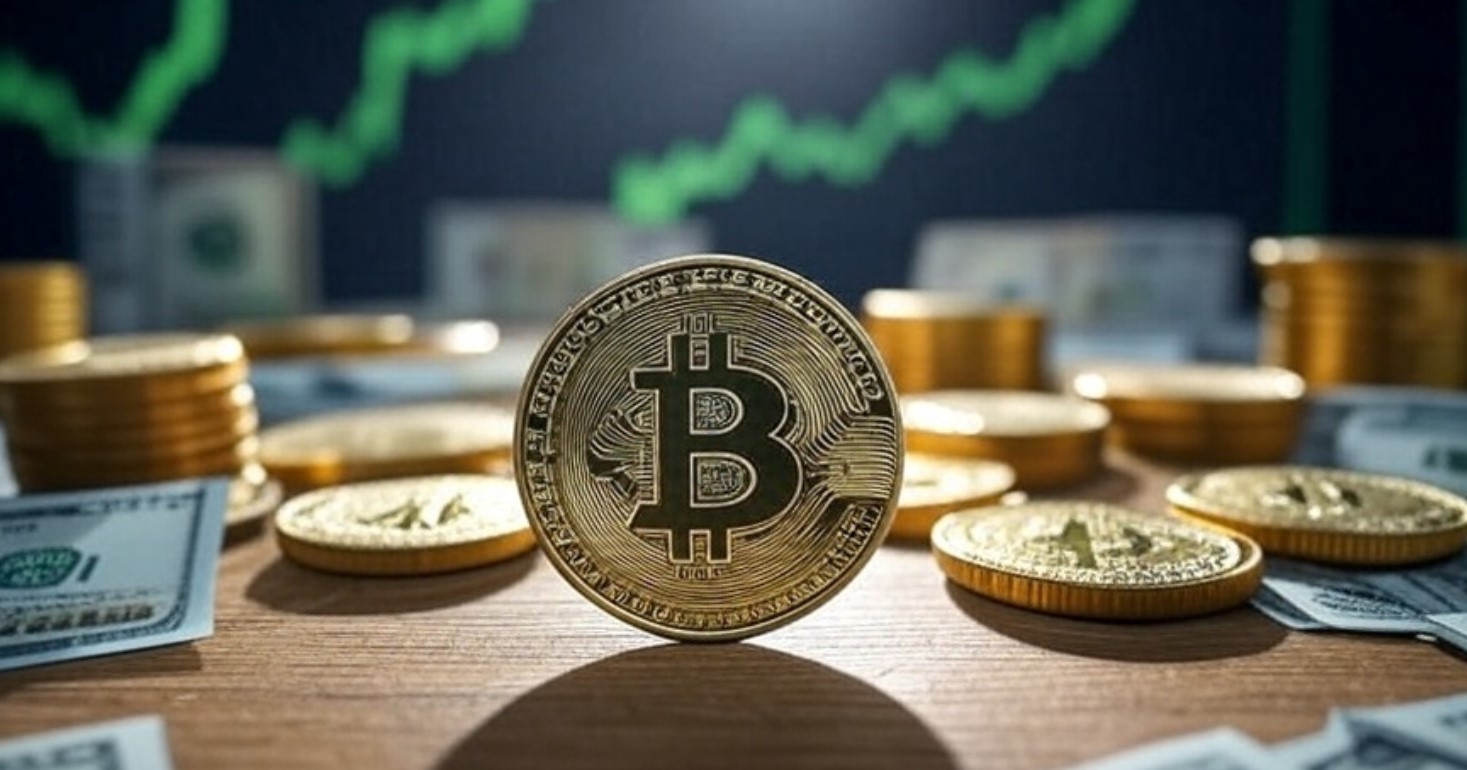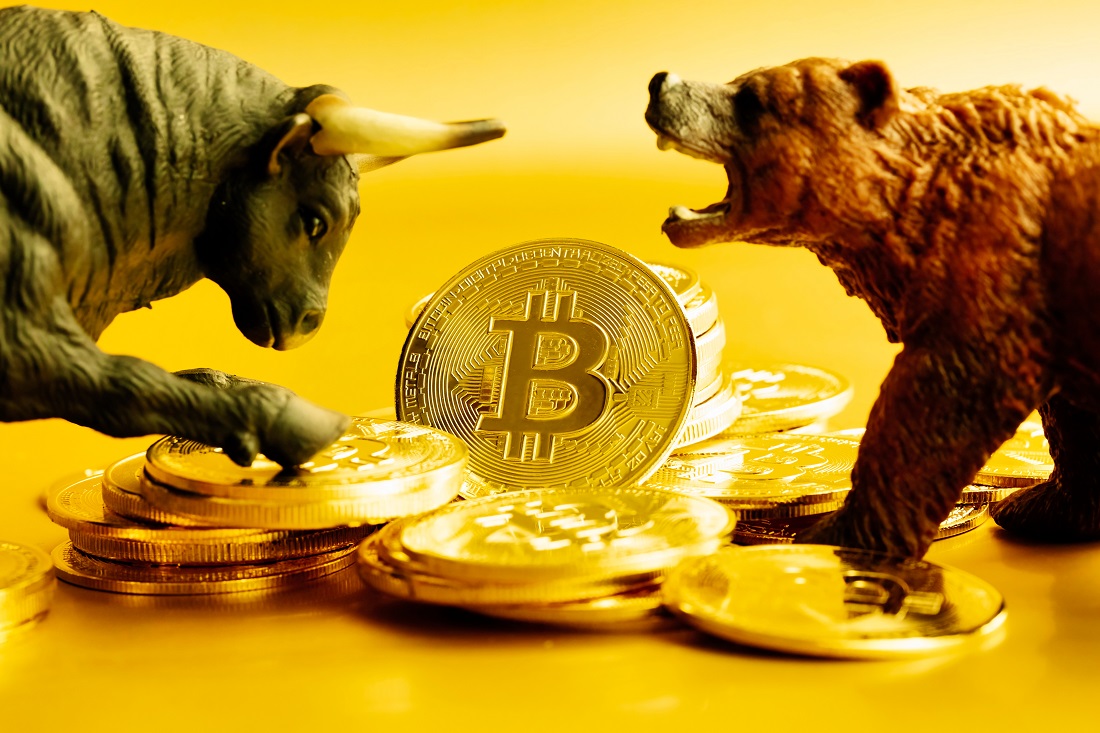The perception that bitcoin is a refuge asset, but also a risk asset, coexists.
That this is happening is an indication that bitcoin is still in its early stages of adoption.
The bitcoin (BTC) and cryptocurrency market experienced a week of high tension, marked by the volatility that was unleashed after a publication on TruthSocial by the president of the United States, Donald Trump, last Friday.
The announcement of a possible imposition of massive tariffs on products from China worked as a catalyst that shook not only traditional exchanges, but also the bitcoin market. The digital currency saw its price plummet from levels close to $126,000 to a low around $102,000 in a matter of hours.
The drop was violent and had a domino effect on traders using leverage. According to market data, the day of Friday, October 10, ended with one of the largest liquidations in recent history, as reported by CriptoNoticias.
However, the storm subsided as quickly as it arrived. At the beginning of this week, a more conciliatory tone from the US administration calmed investors’ spirits.
The mere suggestion that tensions might begin to dissipate was enough for bitcoin will begin a notable recoveryclimbing back above the $115,000 mark and demonstrating resilience that surprised many.

The double narrative that defines bitcoin
To understand why bitcoin reacted this way, first falling sharply and then recovering vigorously, it is essential to analyze the two main competing narratives for defining its identity in the investors’ portfolio.
On the one hand, a significant part of the market still perceives bitcoin as a risk asset. From this perspective, the digital currency is similar to the stocks of technology companies or emerging markets.
They are assets that tend to thrive in an environment of economic stability and optimism, but suffer strong corrections when fear and uncertainty take over the markets.
When a trade war threat arises, like the one last Friday, the instinctive reaction of many investors is to reduce their risk exposure and take refuge in more stable and liquid assets, such as the US dollar. This “flight” explains the initial sell-off that affected bitcoin.
Julián Colombo, general director of Bitso Argentina, explained in a statement shared with CriptoNoticias that “the fall of bitcoin and other digital assets is undoubtedly explained by the announcement of the establishment of trade tariffs from the US on Chinese products. From then on, falls began to be recorded in the price of all assets, or the vast majority.
On the other hand, there is a growing and increasingly solid narrative that positions bitcoin as a store of value or “digital gold”. Those who defend this thesis rely on its fundamental characteristics: a finite and predictable supply of 21 million units, its decentralized nature that makes it resistant to censorship and manipulation by governments or central banks, and its portability across borders.
From this point of view, bitcoin is not an asset for short-term speculation, but rather a refuge to protect long-term assets against the devaluation of fiat currencies and geopolitical instability.
Bitcoin is still in its early stages of adoption
The question that arises, then, is: if bitcoin is “digital gold,” why does its price plummet precisely when there is panic in the markets, a scenario where a store of value should shine?
This is answered taking into account the maturity of the market and the adoption phase in which the asset is located.
The narrative of bitcoin as a store of value is not yet massively established in the consciousness of all global investors. While it has gained immense traction in recent years, with the entry of large institutions and exchange-traded funds (ETFs), its history is short compared to gold’s thousands of years.
In times of acute and unexpected crisis, the learned behavior of most market players is to liquidate the most volatile assets to obtain cash. In this context, the “risk asset” characteristic of bitcoin is temporarily imposed.
However, what differentiates bitcoin from other speculative assets is the speed of its recovery.
The rapid buying of the dip by investors with a long-term conviction demonstrates that the “digital gold” thesis acts as a powerful support. Every time the price falls due to exogenous factors, a contingent of buyers interprets the decline not as weakness, but as like an opportunity to accumulate the asset at a discounted price.
The path to the consolidation of bitcoin as a store of value
In the long term, there are solid arguments to think that the “risk asset” characteristic of bitcoin will lose weight compared to its role as a store of value. Several factors drive this transition.
The first is your planned shortage. In a world where central banks respond to crises with unprecedented monetary expansion, an asset with mathematically unalterable supply becomes increasingly attractive. Bitcoin’s monetary policy is its main strength.
The second is the growing institutional recognition. The approval of spot bitcoin ETFs in the United States has opened the doors to a massive flow of institutional capital that, by its nature, tends to invest with longer time horizons. These big players are not scared by the volatility of a weekend; They invest in bitcoin based on its macroeconomic potential over the next decade.
In this sense, Colombo adds a future perspective:
Beyond the recent corrections, we consider that bitcoin’s bullish trend in the medium and long term remains intact. Its programmed shortage, added to growing institutional recognition, continues to strengthen its position as a safeguard asset. The incorporation of BTC in fund and company portfolios has contributed significantly to its legitimization as a store of value.
Julián Colombo, general director of Bitso Argentina.
In conclusion, the recent episode of volatility linked to the US-China tariffs has been a masterclass in bitcoin’s current personality in global markets.
Bitcoin acts as a seismograph that reacts to macroeconomic tremors as a risk asset, but it is supported by an increasingly solid base of investors who understand it as the store of value of the 21st century.
As its adoption grows and its role consolidates, It is likely that its behavior in the face of future crises will be increasingly similar to that of gold and less than that of a technological action.






Leave a Reply